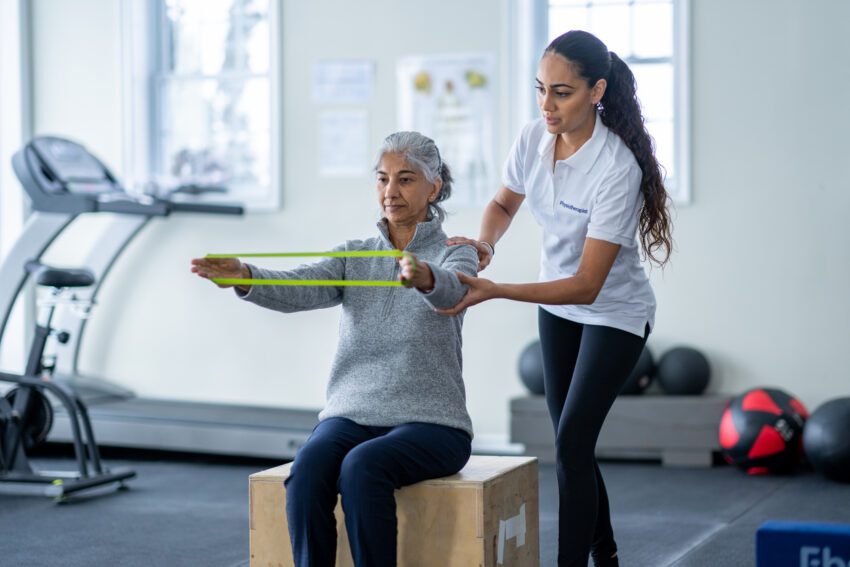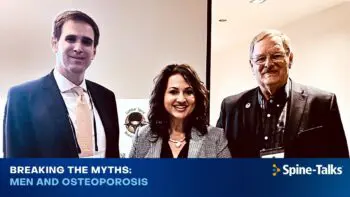Physical therapy (PT) is a common, non-invasive treatment for a variety of spinal conditions, aimed at reducing pain, improving mobility, and preventing further injury. The treatment focuses on strengthening the muscles around the spine, improving flexibility, and promoting proper posture and body mechanics. PT can be used as a primary treatment or in conjunction with other treatments like surgery or injections.
Purpose of Physical Therapy for Spinal Conditions
- Reduce pain and inflammation.
- Improve spinal flexibility, strength, and stability.
- Restore mobility and function.
- Prevent recurrence of spinal issues.
- Support recovery after surgery.
Key Components of Physical Therapy for the Spine
Physical therapy for spinal conditions is often tailored to the individual’s diagnosis, condition severity, and overall health. A combination of treatments is usually used, including:
- Stretching and Flexibility Exercises: Stretching helps relieve tension in muscles and ligaments around the spine, improving flexibility and range of motion. It also helps reduce pain and stiffness.
- Strengthening Exercises: Strengthening the muscles that support the spine, especially the core muscles (abdominals, back muscles, and pelvic floor), is essential for spinal health. Strong muscles can offload stress from the spine and improve posture.
- Aerobic Conditioning: Low-impact aerobic exercise helps improve overall fitness, reduce pain, and support weight management, which is important for reducing stress on the spine.
- Postural Training: Teaching patients how to maintain proper posture throughout the day, whether sitting, standing, or lifting objects, is crucial for avoiding additional strain on the spine.
- Manual Therapy: Hands-on techniques performed by a physical therapist to mobilize or manipulate the spine, improve range of motion, and relieve muscle tension.
- Pain Relief Techniques: Various modalities can help reduce pain and inflammation, which aids in recovery and improves participation in exercises.
- Heat/Cold Therapy: Heat can relax tight muscles, while cold reduces inflammation.
- Electrical Stimulation (TENS): Transcutaneous Electrical Nerve Stimulation can block pain signals.
- Ultrasound Therapy: Uses sound waves to reduce pain and inflammation in deep tissues.
- Body Mechanics Training: Patients are educated on proper lifting techniques, bending, and standing to minimize strain on the spine during daily activities. Learning how to move correctly helps prevent injury and reduces pain.
Progressive Nature of Physical Therapy
PT for spinal conditions typically follows a phased approach:
- Acute Phase: Focuses on relieving pain, reducing inflammation, and protecting the spine. This phase may involve more passive treatments, such as ice/heat therapy, manual therapy, and gentle stretching.
- Recovery Phase: Emphasizes restoring movement, flexibility, and strength. Patients start more active exercises like stretching and muscle strengthening.
- Functional Phase: Aims to restore normal function and prevent future injury. Exercises become more specific to the patient’s daily activities and work, focusing on long-term health and maintenance.
- Maintenance Phase: Once the patient achieves significant improvement, they are given a home exercise program to maintain strength and flexibility, prevent relapse, and manage symptoms if they arise again.
Benefits of Physical Therapy for Spinal Conditions
- Non-Invasive: PT is a conservative treatment option that doesn’t involve surgery or medications.
- Pain Relief: Targeted exercises and therapies can significantly reduce or eliminate back pain.
- Improved Function and Mobility: Patients regain normal movement and strength, allowing them to return to daily activities and work.
- Prevention of Future Problems: By strengthening core muscles and teaching proper body mechanics, PT helps prevent further spine issues and injuries.
Physical Therapy After Spinal Surgery
For patients recovering from spinal surgery (such as spinal fusion, laminectomy, or discectomy), physical therapy is often a critical component of the post-operative rehabilitation process. It helps:
- Restore mobility and flexibility lost during the recovery period.
- Rebuild strength in the muscles that support the spine.
- Prevent complications such as scar tissue formation, stiffness, and muscle atrophy.
- Gradually return the patient to daily activities while protecting the surgical site.
Summary
Physical therapy for spinal conditions is a crucial part of both non-surgical and post-surgical treatment plans. It focuses on pain relief, strengthening muscles, improving flexibility, and educating patients on proper posture and movement techniques. PT is effective in managing conditions like herniated discs, spinal stenosis, and chronic back pain, and it also plays a vital role in helping patients recover from spinal surgery. The treatment is highly personalized, with exercises and therapies tailored to each patient’s specific spinal issue, functional goals, and health needs.



